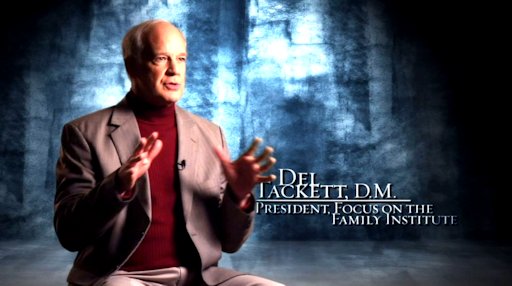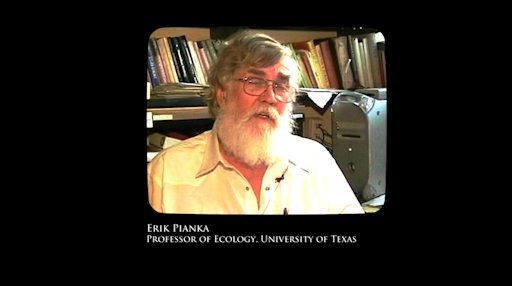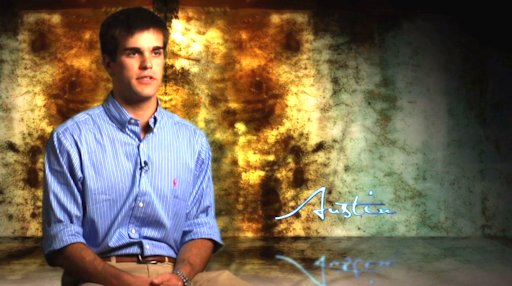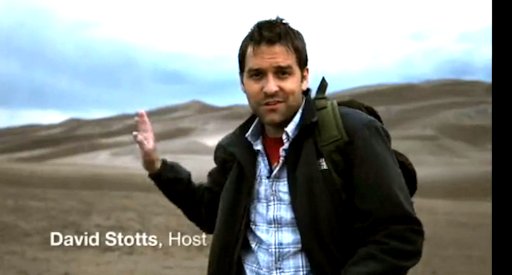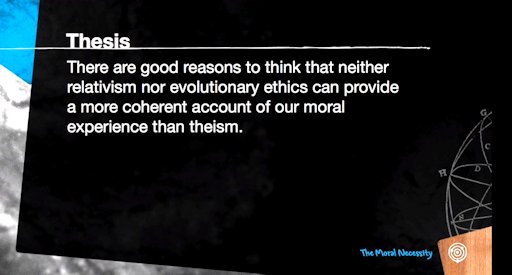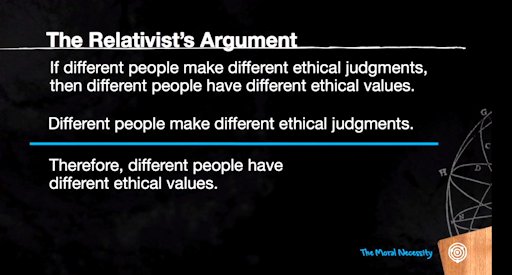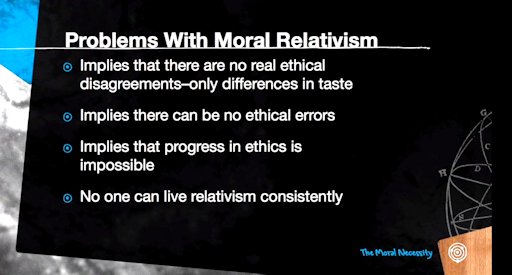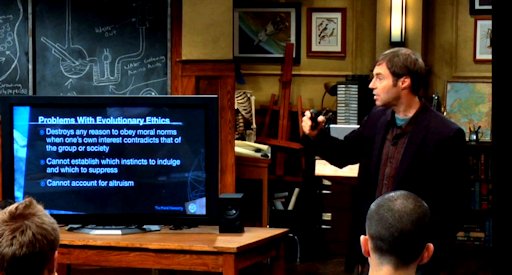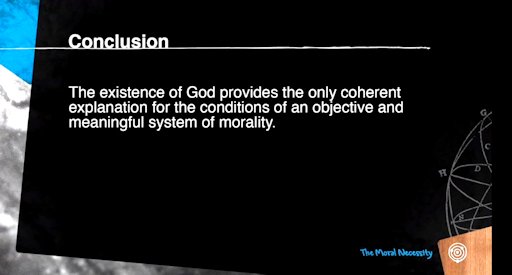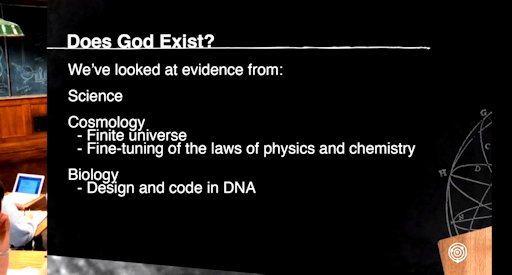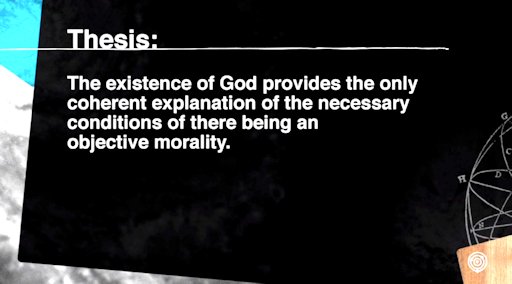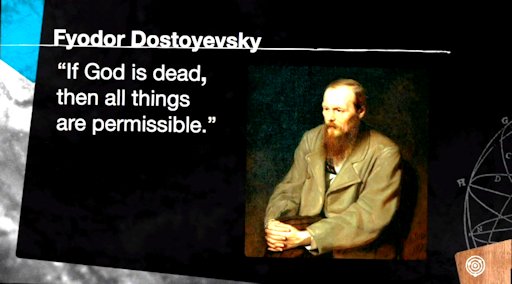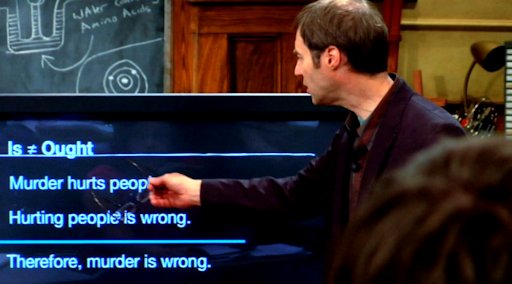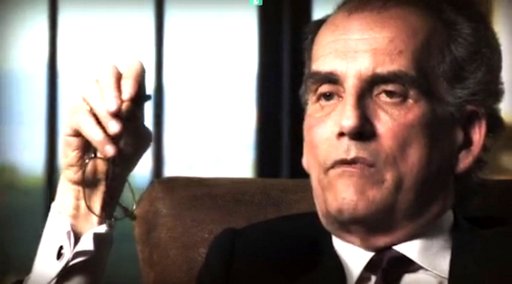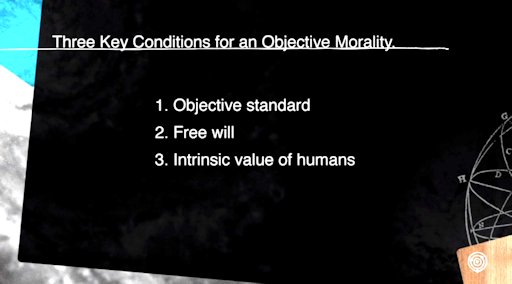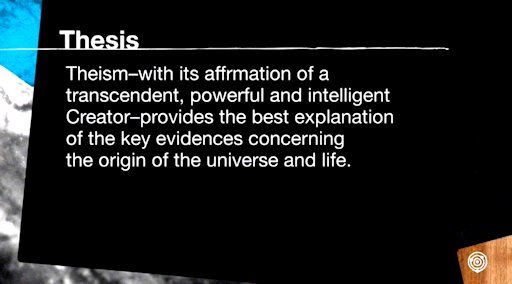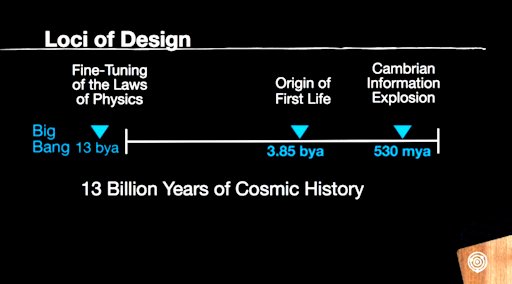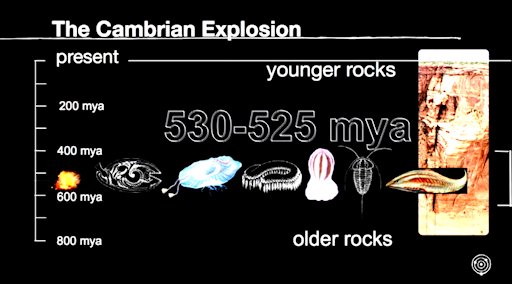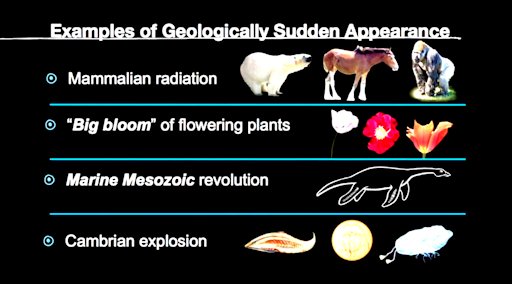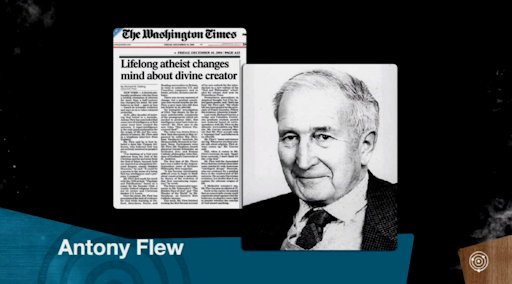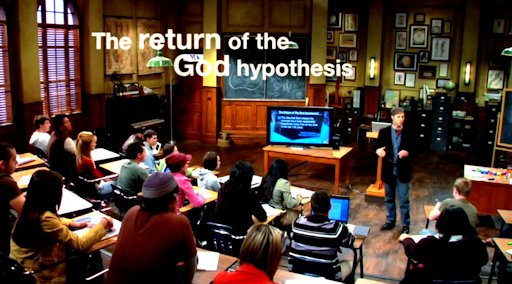I previously reviewed chapter 1, Energy at a Crossroads, subtitled Doomslayers vs. Doomsayers. That chapter, with a number of failings noted, is a determined argument, largely successful, that fossil fuels are a boon to modern civilization. Here I am going to cover chapters 2, 3, and 4 in a single posting, which about measures the limits of my endurance. I will post a some pertinent excerpts along with assessments.
Start with
Chapter 2, How the Shale Revolution is Changing Everything.
In fact, the shale revolution is changing everything. Forty years ago we were forecasting petroleum production to peak in the 21st century. We always knew there were vast stores of oil locked in stone—shale—impractical to extract. Advancing technology has turned that around. With liquid crude oil pumping at $40 per barrel and higher, oil from shale is now competitive.
Strangely enough, the energy bonanza has coincided with the presidency of a man hell-bent on eliminating fossil fuels to avert alleged global warming.
Moore, Stephen; White, Kathleen Hartnett. Fueling Freedom: Exposing the Mad War on Energy (Kindle Locations 602-603). Regnery Publishing. Kindle Edition.
The writers (Moore and White) are, of course, speaking of liberal President Barack Obama, in office at the time the book was published. As I advance through the book, I recognize more and more the pen of writer Stephen Moore, his style and agenda coming to the surface. Here we see the calculated implementation of loaded phrasing with terms like “hell-bent” and “alleged” appearing close by in the same sentence. “Hell-bent” nods to mindless intent on the part of Mr. Obama, and “alleged” reminds us that the science behind anthropogenic global warming (AGW) is faulty, even devious. A stroll through the book will disclose that Moore and White string out a slew of true statements, which soon become undercut by a number of scientific misconceptions and blatant falsehoods. For the remainder of the book I will attribute the content to Moore for the sake of simplicity.
Yet after more than eighteen years without warming global temperatures, the president seeks to increase our dependence on these thuggish regimes and declares that global warming is a greater threat than ISIS.
Moore, Stephen; White, Kathleen Hartnett. Fueling Freedom: Exposing the Mad War on Energy (Kindle Locations 606-607). Regnery Publishing. Kindle Edition.
Here Moore displays a couple of miscues:
- His statement about global temperatures is wrong.
- He published too early, his reference regarding ISIS now overcome by events.

This chart is “Global mean surface temperature change since 1880. Source: NASA GISS” Contrary to what Moore states, we do not seem to have experienced “more than eighteen years without warming global temperatures.” In the meantime, opposing forces, including the United States military, have driven ISIS from its world headquarters in Raqqa, Syria, and ISIS has ceased to exist as a territorial entity. Also, contrary to Moore’s proclamations, ISIS will cease to be an issue long before the effects of AGW have dissipated, if ever.
We know that ISIS terrorist networks are funded to the tune of $ 1 million a day through oil dollars.
Moore, Stephen; White, Kathleen Hartnett. Fueling Freedom: Exposing the Mad War on Energy (Kindle Locations 638-639). Regnery Publishing. Kindle Edition.
I’m still trying to figure out how that fact supports the intent of this book.
The oil and gas extracted in the shale fields began as small aquatic organisms in an ancient inland sea covering the central region of North America from the Great Plains to what we now call Pennsylvania. And by an ancient inland sea, we mean ancient— formed sixty million years ago, during the Cretaceous Period.
Moore, Stephen; White, Kathleen Hartnett. Fueling Freedom: Exposing the Mad War on Energy (Kindle Locations 738-740). Regnery Publishing. Kindle Edition.
While I am prepared to concede that the vast body of oil being pumped today comes from the geological Cenozoic Period, I will not agree that 60 million years ago represents the Cretaceous Period, which ended about 66 million years ago. While this technical gaff does not bely Moore’s tale about the origin of these deposits, it does reflect on sloppy writing and a lack of deep understanding.
One presidential signature can deprive Americans of critical natural resources. In 1996, for example, President Bill Clinton designated 1.7 million acres of land in Utah’s Grand Staircase Escalante as a national monument, putting the largest store of low-sulfur coal in the country off limits. This is the least polluting form of coal and in the highest demand.
Moore, Stephen; White, Kathleen Hartnett. Fueling Freedom: Exposing the Mad War on Energy (Kindle Locations 854-856). Regnery Publishing. Kindle Edition.
Obviously this signals a disconnect of priorities. The Grand Staircase Escalante National Monument is a national treasure, which was given protection by President Clinton. When George W. Bush became president he revoked that protection as one of his first actions. That action produced a backlash, especially from people in the region, and President Bush quickly rescinded his revocation. While I concur with Moore and White that our natural resources need to be exploited for the good of all, there is bound to be something that is too valuable to put on the block.
Bringing the narrative up to the present, President Trump was elected on the strength of his commitment to put business interests first, and his Secretary of the Interior, Ryan Zinke, is proposing to again reverse government protection of the area.
Over the last four decades, American industries have dramatically reduced air and water pollution.
Moore, Stephen; White, Kathleen Hartnett. Fueling Freedom: Exposing the Mad War on Energy (Kindle Location 866). Regnery Publishing. Kindle Edition.
Yes, that is true. I hope Moore and White do not seek to convince us these reductions are being made voluntarily. The hard truth is that government regulations account for these reductions, which regulations, by the way, are now being lifted by the industry-friendly Trump administration.
Some of the book’s language is curious, even puzzling. Take this from the previous chapter:
Yet a reduction of carbon dioxide emissions of this magnitude would mean curtailing the use of the carbon-rich fertilizers that have fed the world since the 1950s, putting the developing world at risk of famine.
Moore, Stephen; White, Kathleen Hartnett. Fueling Freedom: Exposing the Mad War on Energy (Kindle Locations 499-500). Regnery Publishing. Kindle Edition.
I hope everybody agrees that fertilizers do not contain carbon or its compounds as active ingredients. Paging through the chapter I come to this:
Eliminating fertilizer made from natural gas would reduce the food supply— increasing the chronic hunger now suffered by five hundred million human beings.
Moore, Stephen; White, Kathleen Hartnett. Fueling Freedom: Exposing the Mad War on Energy (Kindle Locations 897-899). Regnery Publishing. Kindle Edition.
Yes, natural gas is used in the production of nitrogen fertilizers, but what the authors possibly do not realize is that the process uses hydrogen from natural gas. In the production of ammonia, NH3, the hydrogen from natural gas, CH4, combines with nitrogen in the air. There are many examples like this, indicating the need for some technical assistance in writing the book.
In 2015, the ethanol mandate absorbed 40 percent of the U.S. corn crop. Multiple studies now conclude the production of ethanol is a net energy loss and increases genuine pollution and carbon dioxide. Ethanol policy is a prime example of counterproductive, outdated, and ethically offensive federal energy policy.
Moore, Stephen; White, Kathleen Hartnett. Fueling Freedom: Exposing the Mad War on Energy (Kindle Locations 932-935). Regnery Publishing. Kindle Edition.
I’m tossing this bit out to illustrate the number of valid points made in the book. I’m not bothering to check the facts on this one, because, if the stated numbers are not completely accurate, they are closely enough accurate. Anybody having better information is invited to challenge me here. I look for someone to dig into this more deeply.
Any good points in the book are quickly blunted by statements such as the following:
However disappointing to some who have pledged their careers to politicized climate science, carbon dioxide is not a genuine pollutant capable of harming human health. Fossil fuels— abundant, affordable, concentrated and versatile— are superior to other energy sources at this time.
Moore, Stephen; White, Kathleen Hartnett. Fueling Freedom: Exposing the Mad War on Energy (Kindle Locations 944-946). Regnery Publishing. Kindle Edition.
I am going to take that as saying that all the scientists concluding that AGW is a problem are politicizing climate science. Moore and White want us to know that AGW is not a problem and also that these scientists are lying.
Chapter 3: Saudi America, How Energy is remaking the U.S. Economy
Lots of numbers get thrown around here.
The oil wells of Williston seem to be bottomless. In 1995, the U.S. Geological Survey estimated there were one hundred fifty million “technically recoverable barrels of oil” in the Bakken shale. By 2013, geologists were estimating twenty-four billion barrels. Current technology allows for the extraction of only about 6 percent of the oil trapped one to two miles beneath the earth’s surface, so as the technology advances, recoverable oil could eventually exceed five hundred billion barrels.
Moore, Stephen; White, Kathleen Hartnett. Fueling Freedom: Exposing the Mad War on Energy (Kindle Locations 1003-1007). Regnery Publishing. Kindle Edition.
And I don’t know where Moore and White get these numbers.
In April 2008, a USGS report estimated the amount of recoverable oil using technology readily available at the end of 2007 within the Bakken Formation at 3.0 to 4.3 billion barrels (680,000,000 m3), with a mean of 3.65 billion. Simultaneously the state of North Dakota released a report with a lower estimate of 2.1 billion barrels (330,000,000 m3) of technically recoverable oil in the Bakken. Various other estimates place the total reserves, recoverable and non-recoverable with today’s technology, at up to 24 billion barrels. A recent estimate places the figure at 18 billion barrels. In April 2013, the U.S. Geological Survey released a new figure for expected ultimate recovery of 7.4 billion barrels of oil.
Chapter 4: The Light of the World
Let’s start with this:
Steve Moore was once quoted in the New York Times as saying that “our oil supply is infinite. We will never run out,” a statement that provoked outrage. One high school science teacher wrote, “Mr. Moore: Even my fourteen-year-olds know that oil is finite.” That teacher probably became a top science advisor to President Obama.
Moore, Stephen; White, Kathleen Hartnett. Fueling Freedom: Exposing the Mad War on Energy (Kindle Locations 1272-1275). Regnery Publishing. Kindle Edition.
This is good. The author quotes himself—which quote I was unable to locate—and steps outside his area of expertise. Moore’s NYT statement is technically untrue, as no material thing in this universe seems to be infinite. Whether we will ever run out of oil is another question. A number of things can make this true, including we could all die first. Another possibility is we could reduce our consumption rate to the point we are using oil at the rate the planet is producing it.
To become more prosperous over time, we don’t want to conserve energy, we want to use it.
Moore, Stephen; White, Kathleen Hartnett. Fueling Freedom: Exposing the Mad War on Energy (Kindle Locations 1288-1289). Regnery Publishing. Kindle Edition.
Again a bit of over-inflated rhetoric, and I am sure Moore and White did not intend this to come across the way it did. However, I am not inclined to give them a break. Yes, we want to conserve energy. Energy consumption costs money, and if you want more money in your pocket at the end of the day you will use energy wisely. I reviewed this topic a few years back.

Yeah, a conservative site posted this, presumably to poke fun at the foolishness of energy-saving electric lamps. Here’s a recap:
If only there were any substance to it. Let’s take a look at some reality. A quick visit to Home Depot reveals the following:
$6.97 / package:
$8.97 / case:
What happened to the $6.34 each for CFLs? Where did that price come from? How long did it take the person composing the little ditty above to come up with such a number? It could have taken a while. Writing fiction can be tedious. How about the $0.42 each for incandescents? Let me know where I can get them. Home Depot has its own price:
Which brings us back to “I love using liberal clichés to illustrate the absurdity of liberal policies.” By now you are beginning to think what I’m thinking. This is a joke, right? I mean, nothing goes this far off the rails without a little nudge from somebody. I’m guessing this particular somebody was thinking, “I’m bored, so what I’m going to do is have some fun with dim-witted libruls.”
All right. I concede. It was fun. If this was somebody’s idea of a joke, the joke was well and truly joined. If it was not a joke, then… Then oops! Somebody’s got a problem, and it’s not the kind of problem I’m prepared to help with. Let’s all hope this was just a wall-laid spoof and let it go at that.
Whatever it was, let me describe a bit of the real world.
- 2600 square foot all-electric residence in San Antonio, Texas
- Compact fluorescents installed throughout
- Lamps purchased at Home Depot as shown
- April last year $61 electric bill
- July last year $105 electric bill
Since then I have replaced maybe 26 CFLs with LED lamps equivalent to 60W incandescents but consuming only 9.5 Watts.
Stephen Moore, you are going to have to start getting serious if you want people to take you seriously.
What do we use our energy resources for? That seems like a question with a patently obvious answer, but it’s shocking how few people know where energy comes from and how it is used. When we speak to high school and college kids, we ask, “Where does your electricity come from?” And most of the kids point to the outlet in the wall. Ah, the millennials. They know everything, don’t they? For those who are wiser and know what they don’t know, here are some energy basics.
Moore, Stephen; White, Kathleen Hartnett. Fueling Freedom: Exposing the Mad War on Energy (Kindle Locations 1294-1297). Regnery Publishing. Kindle Edition.
To which I respond, “In your dreams, Stephen Moore.” Public school students are connected to the same sources of information Stephen Moore is, and his humorous characterization is a bit over-played. Reading through this book leaves the impression it is Stephen Moore who could benefit from technical education.
Compounds derived from fossil fuels are the raw materials for thousands of synthetic materials. How would a zero-carbon economy replace these goods and the services they provide?
Moore, Stephen; White, Kathleen Hartnett. Fueling Freedom: Exposing the Mad War on Energy (Kindle Locations 1323-1324). Regnery Publishing. Kindle Edition.
Wait. Wait! Moore is being deliberately deceptive here. Scientists say “zero-carbon,” and they are talking about zero introducing carbon (dioxide) from fossil fuels into the atmosphere. They are not talking about uses of carbon from petroleum to produce consumer products. Unless these synthetic materials are burned, their carbon (dioxide) hardly makes it into the atmosphere. True, the stuff might bloat our landfills, and it often ends up floating somewhere in the ocean, but that is not the same impact as burning fuel oil.
Moore and White venture into the world of physical science and beyond their area of expertise. Some results are amusing.
Damming the flow of rivers in order to generate hydroelectric power is an example of converting gravitational energy.
Moore, Stephen; White, Kathleen Hartnett. Fueling Freedom: Exposing the Mad War on Energy (Kindle Locations 1391-1392). Regnery Publishing. Kindle Edition.
The truth be known, hydro-electric power is ultimately solar power.
The muscles of human beings and animals act as a kind of heat engine to generate mechanical energy for movement and work.
Moore, Stephen; White, Kathleen Hartnett. Fueling Freedom: Exposing the Mad War on Energy (Kindle Locations 1399-1400). Regnery Publishing. Kindle Edition.
No. Just no. Muscle power is not an example of heat conversion to mechanical energy. Muscle action is direct chemical to mechanical conversion.
Chemical energy is the most pervasive form of energy.
Moore, Stephen; White, Kathleen Hartnett. Fueling Freedom: Exposing the Mad War on Energy (Kindle Location 1407). Regnery Publishing. Kindle Edition.
I recognize this book is not intended as a technical treatise, but additional exactitude would be beneficial if sprinkled throughout. On this planet, chemical energy is not an ultimate source. The ultimate source of practically all chemical energy is the sun.
The egg stores almost as much energy as the barrel of oil!
Moore, Stephen; White, Kathleen Hartnett. Fueling Freedom: Exposing the Mad War on Energy (Kindle Locations 1433-1434). Regnery Publishing. Kindle Edition.
Is there a proof reader in the house. Somewhere along the chain Moore has slipped a link. This brash statement is coupled to an external reference:
Vaclav Smil, Energy and Nature in Society (2007), Table A. 8 Energy Flows and Stores at 393.
I don’t have a copy of the book. It’s $38 for the Kindle edition, and I most recently spent my last thousand dollars on a vacation to the tropics. In any event, missteps such as this bolster the impression that precision is not Moore’s strong suite.
Throughout, Moore spells BTU as Btu. It’s BTU.
Moore takes great lengths to emphasize “power density.” For example:
Hydrogen has an energy density by weight far higher than that of any other fuel at 143 MJ/ kg,
Moore, Stephen; White, Kathleen Hartnett. Fueling Freedom: Exposing the Mad War on Energy (Kindle Locations 1465-1466). Regnery Publishing. Kindle Edition.
For the record, about ten years ago I had this discussion with another engineer, and I went so far as to write on paper, sign the paper, and hand over, my statement that the future of powered transportation, particularly automobiles, is hydro-carbon fuel. The high energy density of these fuels makes automobile transportation practical. If petroleum becomes problematic, we will need to manufacture something like gasoline from atmospheric carbon dioxide. Keep in mind that modern air transport relies 100% on hydrocarbon fuel. Since 100 years ago large military operations have been impossible without high-density fuels such as hydrocarbons. Destroy the enemy’s fuel supplies, and you win the war.
Moore gets around to attacking climate science directly.
The theories of man-made global warming and predictions of catastrophic climate change are based on assumptions about the earth’s climate system that are not confirmed by observational evidence. The empirical sciences have long understood that measurement, observation, and experiment are the essential means of validating a scientific hypothesis. Claims of consensus cannot trump physical evidence. As the renowned paleogeologist Ian Plimer, of the University of Adelaide, argues, “The theory of human induced global warming is not science because research is based on a pre-ordained conclusion, huge bodies of evidence are ignored, and the analytical procedures [climate models] are treated as evidence.”
Moore, Stephen; White, Kathleen Hartnett. Fueling Freedom: Exposing the Mad War on Energy (Kindle Locations 1496-1501). Regnery Publishing. Kindle Edition.
I found this interesting, because I have prior (indirect) experience with Ian Plimer. From the newsletter of the North Texas Skeptics:
Of course, the creationists have their embarrassments, as well, and this little pamphlet has been one of them. As reported by Chris Stassen in the talk.origins archive (http://www.talkorigins.org/faqs/gish-exposed.html) Ian Plimer debated Gish in Australia in 1988, and the topic of Brainwashed came up. Stassen quotes from a video tape of the debate. His transcript has Plimer talking about the pamphlet:
There is a diagram there that says, “precambrian: void of fossils.” That is a lie. The Precambrian is not void of fossils; the Precambrian is extremely rich in fossils. He [Gish] has come to the country where there are many Precambrian fossils going back to 3 thousand 3 hundred million years ago.
Plimer has long been known as a champion of real science as opposed to creationism. Moore has quoted Plimer and has provided a footnote:
Alan Moran, Ed., Climate Change: The Facts, “Chapter 1: The Science and Politics of Climate Change,” Ian Plimer (Stockade Books, Institute of Public Affairs, Melbourne, 2015).
Moore, Stephen; White, Kathleen Hartnett. Fueling Freedom: Exposing the Mad War on Energy (Kindle Locations 4637-4638). Regnery Publishing. Kindle Edition.
The book is available in Kindle, and this morning I clicked a link and had it delivered to my computer. Plimer’s section in the book is succinct, and a quick analysis is in order. His statement, “The theory of human induced global warming is not science because research is based on a pre-ordained conclusion, huge bodies of evidence are ignored, and the analytical procedures [climate models] are treated as evidence,” is worth some analysis.
I interpret the first clause as saying that research into AGW is aimed at confirming a conclusion. That statement hangs out there with no visible means of support. None is given here by Plimer, and evidence does not support the conclusion.
It would be helpful if Plimer would cite some of the huge bodies of evidence that are being ignored.
And finally, no. Climate models are not treated as evidence. Climate models are matched against the evidence and corrected to better conform. Furthermore, when the evidence is examined we find the planet (oceans, atmosphere) is getting warmer year after year. See the above graph.
Plimer has more to say, part of which I will excerpt:
Point (ii) has shown to be invalid on all time scales. There is no doubt that CO2 is a greenhouse gas. However, the main greenhouse gas is water vapour. The first 100 parts per million (ppm) of CO2 have a significant effect on atmospheric temperature, whereas any increase from the current 400 ppm will have an insignificant effect. Furthermore, because CO2 has a short residence time in the atmosphere, it is naturally sequestered into the oceans, life, or rocks in less than a decade. In fact, only one molecule of every 85,000 in the atmosphere is CO2 of human origin, and yet we are asked to believe that this one molecule drives hugely complex climate change systems. We are also asked to believe that the 32 molecules of CO2 of natural origin in every 85,000 molecules play no part in driving climate change.
Abbot, Dr John; James Delingpole, Dr Robert M. Carter ~ Rupert Darwall ~; Donna Laframboise, Dr Christopher Essex ~ Dr Stewart W. Franks ~ Dr Kesten C. Green ~; Dr Richard S. Lindzen, Nigel Lawson ~ Bernard Lewin ~; Dr Patrick J. Michaels ~ Dr Alan Moran, Dr Jennifer Marohasy ~ Dr Ross McKitrick ~; Nova, Jo; Dr Willie Soon, Dr Garth W. Paltridge ~ Dr Ian Plimer ~; Steyn, Mark; Watts, Anthony; Andrew Bolt; Dr J. Scott Armstrong. Climate Change: The Facts (Kindle Locations 201-208). Stockade Books. Kindle Edition.
“However, the main greenhouse gas is water vapour.” Yes! What of it? Water vapor in the atmosphere contributes immensely to keeping the planet warm. The effect of carbon-dioxide is an add-on.
“The first 100 parts per million (ppm) of CO2 have a significant effect on atmospheric temperature, whereas any increase from the current 400 ppm will have an insignificant effect.” This statement would be helped if some substantiation were provided.
“Furthermore, because CO2 has a short residence time in the atmosphere, it is naturally sequestered into the oceans, life, or rocks in less than a decade.” [Emphasis added] This is contrary to known facts. The life span of carbon dioxide in the atmosphere is in the order of 200 years.
“In fact, only one molecule of every 85,000 in the atmosphere is CO2 of human origin.” I don’t get the same number that Plimer does. Starting with 280 ppm CO2 we are now at 400 ppm, due to human activity. That’s a 120 ppm human contribution, or one molecule for every 8333 in the atmosphere. Where did the 85,000 come from?
The remainder of Plimer’s statement is an argument from incredulity, something Plimer must have seen a lot in his debates with creationists. You don’t believe something, so it must be false.
Anyhow, Moore and White choose citations from sources that fit their purpose, apparently with little regard for fact.
To oversimplify, it is said that the relatively small increment of man-made carbon dioxide added to the natural atmospheric concentration of carbon dioxide since the Industrial Revolution disrupts the natural dynamics of climate. Adding more carbon dioxide, a greenhouse gas, to the atmosphere could lead to some warming, but could the relatively small additional increment of man-made carbon dioxide overpower the natural variables of climate, leading to planetary catastrophe?
Moore, Stephen; White, Kathleen Hartnett. Fueling Freedom: Exposing the Mad War on Energy (Kindle Locations 1502-1505). Regnery Publishing. Kindle Edition.
Yes, the rise in temperature due to AGW is small, something in the order of 1 – 3 C. People, that’s the problem we are talking about. That is only through the end of the 21st century, and it assumes additional concentrations of CO2. Take another look at the graph above. I see a rise of 1 C since I was born. The effects are already noticeable. Please let me know if you do not think this is a problem.
In a 2009 scandal popularly known as “Climategate,” e-mails between key authors of the IPCC’s 2008 assessment report revealed an even darker side of the IPCC: active efforts to suppress, destroy, and manipulate data, to exaggerate temperature records and to prevent the publication of works by dissenting scientists in academic journals. 32 Several investigations followed, and some leading scientists called for a dissolution of the IPCC, but the UN-driven process limped on.
Moore, Stephen; White, Kathleen Hartnett. Fueling Freedom: Exposing the Mad War on Energy (Kindle Locations 1520-1524). Regnery Publishing. Kindle Edition.
Really? A deeper look at the supposed scandal is worthwhile.
Eight committees investigated the allegations and published reports, finding no evidence of fraud or scientific misconduct. However, the reports called on the scientists to avoid any such allegations in the future by taking steps to regain public confidence in their work, for example by opening up access to their supporting data, processing methods and software, and by promptly honouring freedom of information requests. The scientific consensus that global warming is occurring as a result of human activity remained unchanged throughout the investigations.
AGW skeptics continue to cite this story, indicating this is one of their best arguments going. My take: a good argument must be made of stronger stuff.
For instance, the way the human body burns the chemical energy contained in food is similar to the way the internal combustion engine of an automobile burns the chemical energy in gasoline.
Moore, Stephen; White, Kathleen Hartnett. Fueling Freedom: Exposing the Mad War on Energy (Kindle Locations 1544-1546). Regnery Publishing. Kindle Edition.
Again, no.
This makes the concentration of carbon dioxide in human expiration about forty thousand parts per million (ppm)! The current atmospheric concentration of carbon dioxide is now about four hundred ppm, including man-made contributions from the combustion of fossil fuels. 39 Atmospheric levels of carbon dioxide in 1850 are thought to have been about 280 ppm.
Moore, Stephen; White, Kathleen Hartnett. Fueling Freedom: Exposing the Mad War on Energy (Kindle Locations 1562-1565). Regnery Publishing. Kindle Edition.
This is a strange argument. I wish somebody would explain what Moore is getting at.
The earth’s location in our solar system is also essential to its ability to support life.
Moore, Stephen; White, Kathleen Hartnett. Fueling Freedom: Exposing the Mad War on Energy (Kindle Locations 1565-1566). Regnery Publishing. Kindle Edition.
Really, again. And this has what to do with the discussion?
“That the sun influences our climate should not be surprising . . . when we consider that 99.98 percent of the total energy of the world’s climate comes from the sun.”
Oddly, the UN’s IPCC, whose “science” is the authoritative support for climate policy to supplant fossil fuels, largely dismisses the sun’s effect on climate. The IPCC assumes that the increased man-made emissions of carbon dioxide over the previous two centuries overpower the influence of the sun— and of all other natural climactic variables, such as water vapor, clouds, and aerosols— on climate.
Moore, Stephen; White, Kathleen Hartnett. Fueling Freedom: Exposing the Mad War on Energy (Kindle Locations 1574-1579). Regnery Publishing. Kindle Edition.
The reference is to a book by Luning and Vahrenholt, and this seems to be the quote of interest.
What makes us so sure that the sun, which is dismissed by the IPCC, plays a central role in climate events? That is relatively easy to answer. Geological climate reconstructions exhaustively show that temperatures on earth have followed solar activit y for thousands of years. That is not surprising when we consider that 99.98 per cent of the total energy of the world’s climate comes from the sun. Would it not make sense to suspect that even small changes in solar energy could have huge impacts?
Luning, Sebastian; Vahrenholt, Fritz. The Neglected Sun: Why the Sun Precludes Climate Catastrophe (Kindle Locations 576-580). The Heartland Institute. Kindle Edition.
What is odd is that Moore is telling us the IPCC discounts the sun’s effects on global warming. Actually, all of AGW is due to the sun. Somewhere it has gotten lost that AGW results from the action of additional CO2 trapping additional heat from the sun.
What is not odd is the publisher of the Luning and Vahrenholt book is the Heartland Institute.
Human Activity Trumps the Power of the Sun?
To get a sense of the power of the sun, consider that it burns over six hundred million metric tons of hydrogen every second.
Moore, Stephen; White, Kathleen Hartnett. Fueling Freedom: Exposing the Mad War on Energy (Kindle Locations 1592-1593). Regnery Publishing. Kindle Edition.
Moore and White continue to impress us with the power of the sun, deliberately missing the irrelevance of this argument.
Major advances in the scientific understanding of energy and its engineering applications have occurred only within the past two centuries. Although we know more about how energy operates in the natural world and how it can be harnessed for human purposes, we still lack a clear understanding of what energy is. Is it a particle or a wave?
Moore, Stephen; White, Kathleen Hartnett. Fueling Freedom: Exposing the Mad War on Energy (Kindle Locations 1603-1605). Regnery Publishing. Kindle Edition.
Yikes! Is there a physicist in the house? Energy is a particle or a wave? Does Moore want to take another cut at that statement? Reading through the book, I get an indication of why the Kansas City Star no longer prints Moore’s contributions.
And the agent is the most fundamental natural energy conversion on the earth, commonly known as photosynthesis catalyzed by atmospheric carbon dioxide.
Moore, Stephen; White, Kathleen Hartnett. Fueling Freedom: Exposing the Mad War on Energy (Kindle Locations 1617-1618). Regnery Publishing. Kindle Edition.
Now we need help from a chemistry major. Strictly speaking, carbon dioxide does not catalyze photosynthesis. It is consumed in the process.
Many machines, or “prime movers” as engineers call them, that convert energy from one form to another, like the turbines used by modern thermal power plants, can convert 99 percent of the turbine’s mechanical energy into electricity.
Moore, Stephen; White, Kathleen Hartnett. Fueling Freedom: Exposing the Mad War on Energy (Kindle Locations 1645-1646). Regnery Publishing. Kindle Edition.
While likely true, also irrelevant. The conversion of mechanical energy to electrical energy is a notably efficient process. The turbine turns a generator rotor, driving an electric current through the coils. What is critical to the operation of a turbine generating system is the efficiency of converting available energy from the coal (oil, natural gas) into mechanical energy. This is much less than 98%. And none of it matters to the topic under discussion.
Many senior scientists in the field conclude that it is time to declare the IPCC’s methodology and computer models a failure. A portion of the federal research funds should be allocated to those highly credentialed scientists— now marginalized as skeptics— to assess the IPCC’s work over the last several decades and to offer alternative theories and evidence.
Moore, Stephen; White, Kathleen Hartnett. Fueling Freedom: Exposing the Mad War on Energy (Kindle Locations 1657-1660). Regnery Publishing. Kindle Edition.
Yes, get rid of the scientists who are coming up with conclusions you disagree with and get in some of your own people. Changing the researcher is the best way to change the facts. Except, it does not work that way. The facts are going to remain the same.
Natural carbon dioxide accounts for a minuscule 0.039 percent of the atmospheric gasses we actually breathe at the tropospheric level.
Moore, Stephen; White, Kathleen Hartnett. Fueling Freedom: Exposing the Mad War on Energy (Kindle Locations 1668-1669). Regnery Publishing. Kindle Edition.
Yes, I know. “A foolish consistency is the hobgoblin of little minds.” However, is it too much to ask Moore not to state the concentration of CO2 is 400 ppm and then a few pages later state it’s 399? And wait! He’s calling the 399 ppm “natural CO2,” when 120 ppm of that is due to human activity. Forget about consistency.
Governments and the private sector have already directed hundreds of billions of dollars to ridding the world of carbon. Betting on the success of this effort would be a highly risky investment. Carbon, after all, is defined as “the chemical basis of all known life.” 55 Have people forgotten this fact?
Moore, Stephen; White, Kathleen Hartnett. Fueling Freedom: Exposing the Mad War on Energy (Kindle Locations 1686-1688). Regnery Publishing. Kindle Edition.
I know of one household where this is not forgotten. What seems to be forgotten by Moore is that the conversation is supposed to be about carbon in the atmosphere in the form of CO2 produced by human activity.
The global warming alarmists and many educated elites have lost their faith in man’s ability to adapt and to tame his natural surroundings. Making carbon the enemy of the planet means that mankind is the enemy of the planet. Our bones, blood, and flesh are made of carbon.
Moore, Stephen; White, Kathleen Hartnett. Fueling Freedom: Exposing the Mad War on Energy (Kindle Locations 1710-1712). Regnery Publishing. Kindle Edition.
My impression: this is the level of thinking that went into the writing of this book.
Am I allowed to take a small victory lap and then head off for a nap? No, I still have to read chapters 5 through 11. It promises to be fun. Keep reading. And may Jesus have mercy on our souls.











